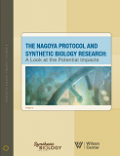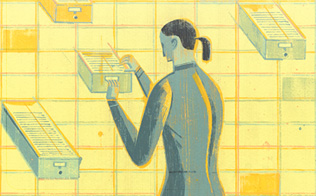Publications

November 8, 2013
The Nagoya Protocol and Synthetic Biology Research: A Look at the Potential Impacts
How Will the Protocol Affect Research?
The United Nations (UN) is working to ensure that the benefits of genetic resources are shared in a fair and equitable way via the Nagoya Protocol to the Convention on Biological Diversity.
The Nagoya Protocol was adopted in 2010 to provide a transparent legal framework for sharing genetic resources. “Its objective is the fair and equitable sharing of benefits arising from the utilization of genetic resources, thereby contributing to the conservation and sustainable use of biodiversity,” according to the UN.
This new report from the Synthetic Biology Project at the Woodrow Wilson International Center for Scholars looks at how the protocol may affect U.S. researchers working in the field of synthetic biology. The report was written by Margo Bagley of the University of Virginia School of Law and Arti Rai of the Duke Law Center for Innovation Policy at Duke University School of Law.
The report finds significant uncertainty surrounding what sorts of genetic material is covered and when the protocol would go into effect. For example:
Would parts or “biobricks” be covered? Would genetic samples collected prior to the ratification of the treaty be covered? Would digital sequences shared over the web be covered?
Despite this uncertainty and despite the fact the United States is not a signatory to the Nagoya Protocol or the Convention on Biological Diversity, the report suggests that U.S. researchers engage in these discussions as they develop, verify the origin of the genetic material that they use, and ensure that such material was taken in compliance with the domestic law of a provider country.
